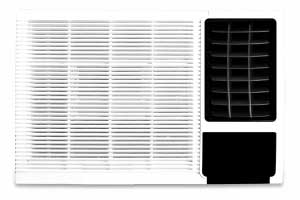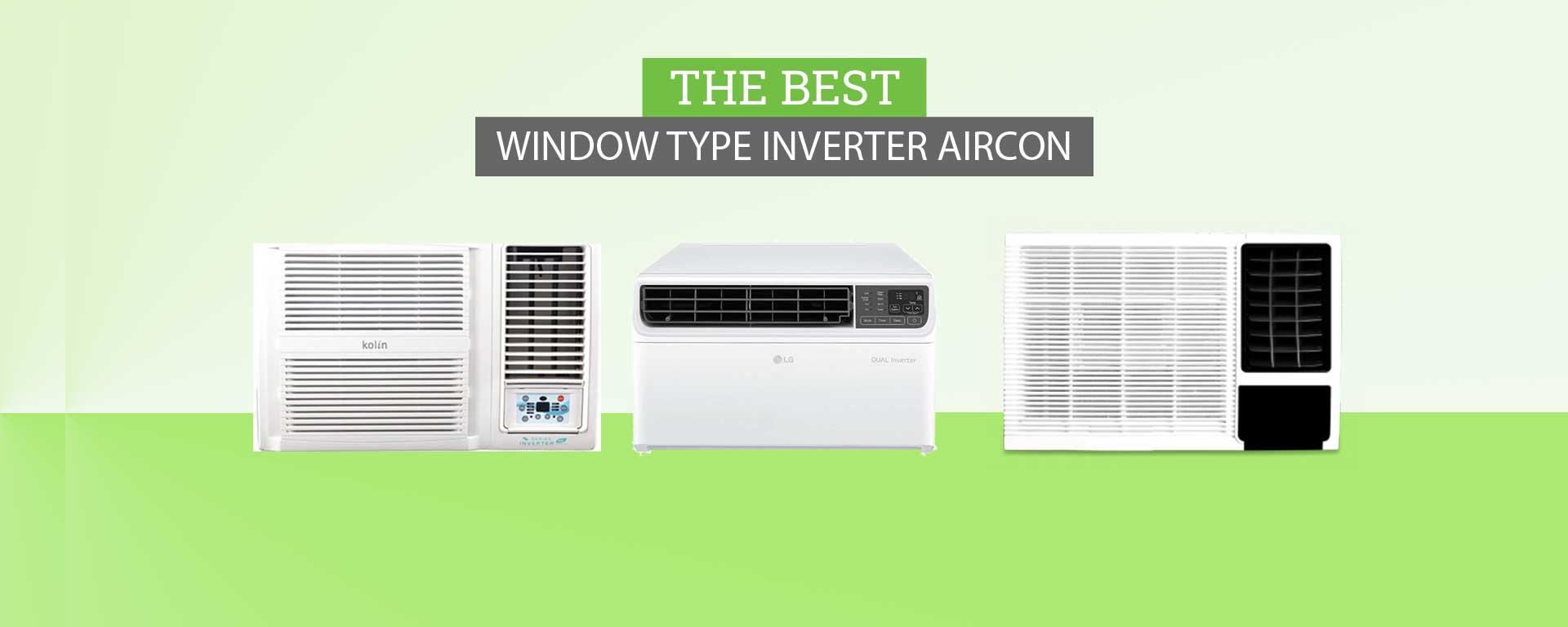Air conditioners are notoriously expensive to operate, which is why picking an energy-efficient model from the get-go is a wise decision. If you are looking for an energy-efficient window type aircon, you should consider getting an inverter model.
While an inverter air conditioner can save you as much as 15% more energy compared to a non-inverter window type model, the additional upfront cost of ₱10,000 can be a turn-off for many buyers. However, according to our calculations, it is estimated that you will recoup that cost in savings after three years.
In this article, we will flesh out why getting an inverter window type air conditioner is a fine choice for budget-conscious people – even with the high upfront cost.
Also, we will give you our recommended model for each category. But if you want a quick look, here are our top picks:
- The cheapest
- The slimmest
- The most energy-efficient
Read on for a more in-depth explanation of why we think that these are the best models in this category.
How an inverter aircon works
Air conditioners work by continuously evaporating and condensing a refrigerant gas (called Freon) through the copper tubes inside the air conditioner. As the Freon evaporates, it produces a cooling effect that “absorbs” the heat from the air that is sucked into the aircon. This gas is pumped by the compressor, and thus most of the energy costs go towards the operation of the compressor.
A non-inverter air conditioner maintains the temperature in the room by operating its compressor in a start-stop manner with its thermostat calling the shots. This is why you hear your aircon roaring back to life after a few moments of it being silent. Considering that the compressor uses the most amount of power during startup, a lot of energy is wasted on non-inverter compressors as they stop and start multiple times a day.
In contrast, an inverter air conditioner controls the frequency of the incoming electrical current that goes to the compressor which allows the AC to operate at varying speeds – not just start and stop. In effect, the inverter compressor does not completely shut off. Instead, it operates at a lower speed to maintain the set temperature. This allows it to save energy in the long run but by how much?
Can a window-type inverter aircon save energy?
An inverter window type air conditioner is 15% more energy efficient compared to non-inverter models. Let us illustrate:
For this example, we are going to compare two 1.0HP window type models from Sharp: AF-T1017CR (non-inverter), and AF-X10SCF (inverter).
Non-inverter
| Cooling Capacity | 9,360 kJ/hr 1.0 HP |
| Room Size | 13 – 17 sqm. |
| EER | 9.9 |
| Wattage | 950W |
| SRP | ₱17,498 |
Inverter
| Cooling Capacity | 9.640 kJ/hr 1.0 HP |
| Room Size | 12 – 18 sqm. |
| EER | 11.2 |
| Wattage | 810W |
| SRP | ₱27,498 |
As you can see from the table, the wattage of the window type inverter is 15% lower compared to the non-inverter model. And because of this, its energy efficiency ratio is also higher. And according to our calculations, the inverter model will save you ₱3,628.8 per year.
If you want to see the full computation of an inverter vs. non-inverter air conditioner, check out this other article we wrote!
Is a window type inverter aircon worth it?
As we’ve stated earlier, an inverter aircon typically costs ₱10,000 more compared to its non-inverter counterpart. This may sound like a sizeable additional investment for some, but when you do the math you will find that it is worth it.
Using our earlier computation, with a savings of ₱3,628.8 per year, it will only take 2 years and 9 months to recoup the additional ₱10,000 you’ve spent on the inverter model. And considering that the average lifespan of a window air conditioner is 10 years, your initial investment will keep paying dividends in savings in the long run.
The best window type inverter air conditioners in the Philippines
Without further ado, here are our top picks for each category of window type inverter air conditioner.
The cheapest – Kolin KAG-110RSINV (1.0 HP)

At an SRP of ₱25,995, the 1.0 HP Kolin KAG-110RSINV is the cheapest window type inverter aircon in the market. The powerful compressor enables it to cool the room quickly, thereby lowering your energy consumption. Its air filter is also easily accessible which makes its maintenance a tad easier. It even gives off an alarm every 250 hours of use to remind you to clean the filter!
Specifications:
- Cooling capacity – 9,950 kJ/h
- Recommended Floor Area: 13 – 19 sqm
- EER – 13.1
- Wattage – 760W
The slimmest – LG LA080EC (0.80 HP)
The physical dimensions of a window type inverter are more important than you think. To illustrate what we mean, here is a comparison of the dimensions of the two previous 1.0 HP Sharp AC models we’ve used earlier:
| Dimensions | Non-inverter | Inverter |
| Width | 470mm | 560mm |
| Height | 355mm | 375mm |
| Length | 535mm | 708mm |
As you can see, the inverter model is significantly larger compared to the non-inverter model. This could mean that most window type inverter air conditioners cannot fit in most ready-made AC openings, forcing you to enlarge the hole or look at a different model altogether.
To solve this, manufacturers are now designing their window type inverter air conditioners to be almost the same width and height as their non-inverter counterparts.

One such brand who are making this switch is LG, with their slimmest window type inverter model being the 0.80HP LA080EC. Here is its comparison compared to its non-inverter counterpart:
| Dimensions | Non-inverter | Inverter |
| Width | 497mm | 497mm |
| Height | 314mm | 317mm |
| Length | 492mm | 623mm |
As you can see, the inverter model is almost the same size as the non-inverter model, hence it could fit in the same opening without any added work. The main difference between the two is their lengths (this is how long the AC is from front to back). To compensate for the smaller width and height, the inverter models tend to be longer compared to their non-inverter counterparts. However, this isn’t much of an issue as the extra length just hangs off outside of your wall anyway.
Aside from the size advantage, this model is also equipped with a dual inverter compressor which saves energy and can operate silently. You can also control the air conditioner from your smartphone with the ThinQ™ app. All of these are wrapped in, in my opinion, a very elegant package, and are available at an SRP of ₱34,498!
Specifications:
- Cooling capacity – 8,400 kJ/h
- EER – 12.1
- Wattage – 690W
The most energy efficient – Carrier WCARH019EEV (2.0HP)

With an EER of 14.3, the Carrier WCARH019EEV easily beats out its main competitors whose EERs range from 10.0 – to 13.0. It is equipped with several energy-saving features such as a 24-hour timer, the Econo Feature, and the energy-savings plug. The Econo feature automatically turns off your unit once the desired temperature is reached, while the Energy-Savings plug automatically turns on the electric fan once the air conditioner is turned off. All of this comes with an SRP of ₱55,300.
Specifications:
- Cooling capacity – 18,750 kJ/h
- Recommended floor area – 27 – 36 sqm
- EER – 14.3
- Wattage – 1,311W
Conclusion
We hope that our top choices for each category of window type inverter air conditioners also made sense to you. If you’re still not sure which type of aircon you should get, we’ve written a buying guide to help you in your decision-making process.

Miguel Mores worked for 5 years as a member of the product management team for a home appliance company in the Philippines. He started 101appliance to answer the most common customer questions that he has encountered during his time in the industry. He now works in the digital marketing field and manages a small online bookstore on the side.


Are LG window type inverter airconditioners.8HP equipped with remote control? I presently have 2 LG airconditioners installed in my new house .75HP, non-inverter. Can I trade-in them with inverter, if so, how much shall I pay? Thank you.
I’m using Carrier XPower Gold 3 and it’s really electricity saving. Our bill is only 3k yet we’re opening it whole night + another AC unit (Window Type), microwave of daily usage, side-by-side ref (LG Inverter), etc. We’re having it as one of our product lineups in our online appliances store which is to start on November 2021. Thanks!
Here is the link >>> http://www.jgactechnologies.com.